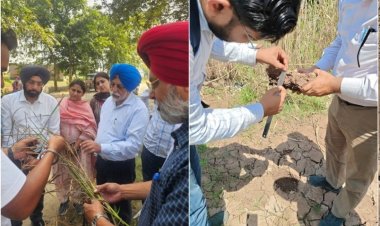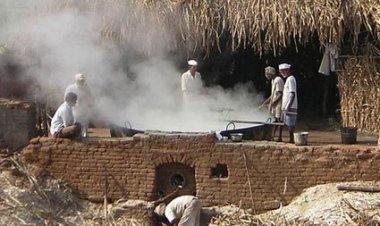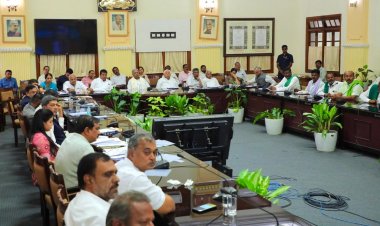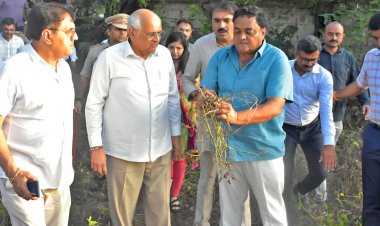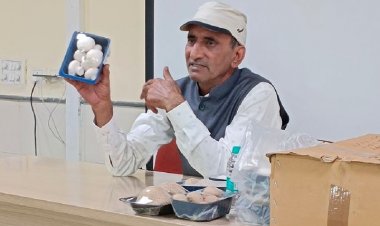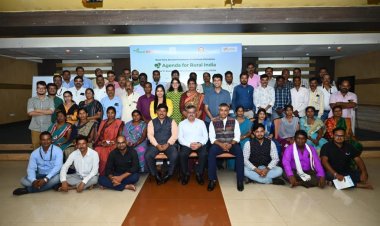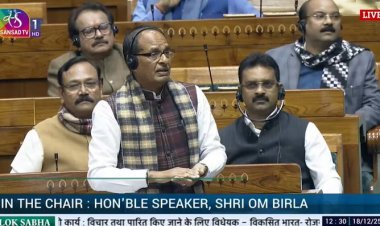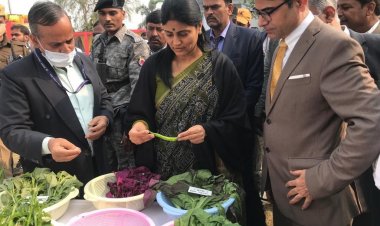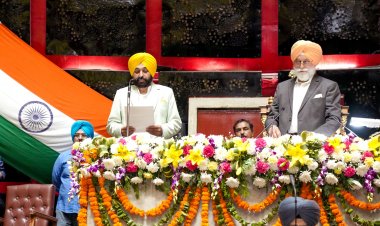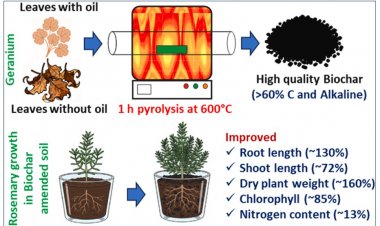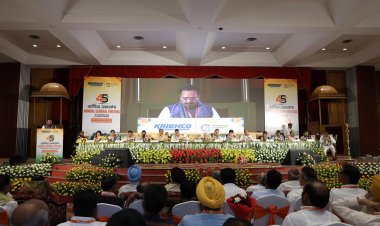Sugarcane farmers’ dues cross Rs 12,000 crores in UP; record earnings for sugar mills
There has been no increase in the SAP for sugarcane in UP for three seasons even as the farmers’ costs have continuously risen. The payment of cane arrears is getting delayed year after year. At present, the sugar mills owe more than Rs 12,000 crores to the cane farmers. Add the interest due and the amount goes up to approximately Rs 15,000 crores. On the other hand, the available data suggest that the profit of several sugar mills has nearly doubled.
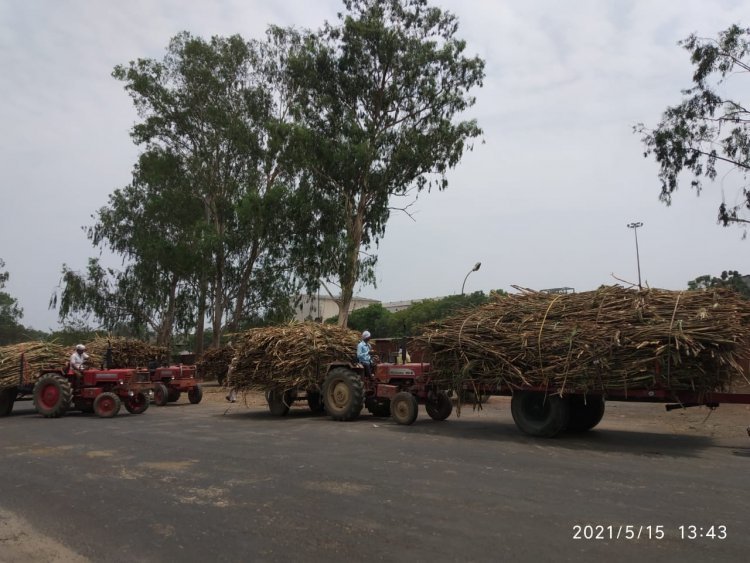
Every new season comes with its own share of troubles for the sugarcane farmers of Uttar Pradesh (UP), the state which produces the maximum sugar in the country. That the electricity tariffs went up, the diesel prices went up and now the fertilizer prices have gone up are all matters of concern to the cane farmers. The reason: There has been no increase in the State Advised Price (SAP) for sugarcane in UP for three seasons even as the farmers’ costs have continuously risen. The payment of cane arrears is getting delayed year after year. At present, the sugar mills owe more than Rs 12,000 crores to the cane farmers. Add the interest due and the amount goes up to approximately Rs 15,000 crores. On the other hand, the available data suggest that the profit of several sugar mills has nearly doubled. Besides, the share prices of the sugar mills listed in the stock market have leaped as high as 75 per cent over the last few months. Thus, on the one hand, sugar mills are reaping increasing profits, while on the other, their owners are getting richer thanks to the increase in the share prices.
If we speak about the present government and the two previous ones, the increase in the SAP for sugarcane has been the least during the Yogi government. When Chief Minister Mayawati’s Bahujan Samaj Party (BSP) came to power in 2007, the SAP for sugarcane stood at Rs 125 per quintal in the state. But it went up to Rs 240 per quintal during her tenure. That is, her tenure saw an increase of a total of Rs 115 per quintal. Every increase in the SAP for sugarcane during the Mayawati government ranged from 12 to 24 per cent. The Akhilesh Yadav government, which came to power in the year 2012, increased the SAP for sugarcane twice by a total of Rs 65 per quintal, taking it up to Rs 305 per quintal. But it kept the SAP constant for three years. The two increases during the tenure of his government were 9 per cent and 17 per cent respectively.
In contrast to these two governments, however, the present BJP government brought about the sole increase of Rs 10 per quintal in the 2017-18 season — an increase of about 3 per cent. There has been no increase in the subsequent seasons of 2018-19, 2019-20 and 2020-21 (the ongoing one) and the SAP has remained constant. The present dispensation has also created the record for the delay in announcing the SAP for the current season. The decision was taken on February 14, 2021, while the crushing season for sugarcane is from October to September.
What is interesting amidst all this is that while the state government claims to have made record payments and corroborates this by aggregating the data for the last four seasons, it is unwilling to share any fresh official data regarding the dues in the current crushing season (2020-21). The UP Sugar Mills Association (UPSMA), the association of the private sugar mills of the state, has also kept mum likewise.
The data regarding the supply of cane to every sugar mill, its crushing, the sugar production along with the recovery level, etc gets updated with the government regularly. Thus, there is no reason why the government cannot issue the data regarding cane payment arrears. However, the data are not being issued because there is apprehension that doing so may give rise to a political issue and thereby harm the government.
In fact, what is interesting is that, as of May 10, the data for crushing of cane stands at 10.1 crore tonnes. Even at an average of Rs 320 per quintal, this translates into payments worth about Rs 32,150 crores. On the other hand, as per the data up to May 13, 2021, published on the website of the Sugar Industry and Cane Development Department, payments of Rs 19,658.39 crores have been made. Also, the data for the crushing of sugar would have gone up between May 10 and May 13. Even if we go by the data for crushing up to May 10, the dues stand at about Rs 12,500 crores.
The calculation of the dues from the sugar mills is done, however, 14 days after cane supply because they are legally expected to pay during this period. There is the provision of interest on payments made after this period. Since most of the sugar mills in the state are closed, the dues after 14 days will be nearly the same as calculated above. Besides, if we also add the interest due on sugar mills, the level of dues will go up to nearly Rs 15,000 crores. According to the information shared by the department on May 13, 2021, payments of Rs 1,34,898.85 crores have been made to the cane farmers for 2017-18, 2018-19, 2019-20 and the current period of the ongoing crushing season of 2020-21.
In a conversation with RuralVoice on cane payment dues and issues related to it, Suresh Rana, the UP Minister for Cane Development and Sugar Industry, said, “The BJP government led by Chief Minister Yogi Adityanath cleared payments worth more than Rs 13,000 crores from the tenure of the previous government. In our tenure, however, there are no dues for any previous season. In our tenure of four years, we have made payments of more than Rs 1.34 lakh crores to the cane farmers, which is the highest ever. As far as the current season is concerned, 62 per cent of the payments for the current crushing season have been made to the farmers in spite of the Covid-19 pandemic and we are making an effort to do most of the payments soon. The offtake of sugar from the mills has drastically reduced in the wake of Covid-19.”
On being asked about the record dues on sugar mills in his home district Shamli and Assembly constituency Thana Bhavan, Suresh Rana said, “Majority of the sugar mills in the state have made 80 per cent of the payments or more. But there are about half a dozen sugar mill groups that have paid less. These include all the three sugar mills of the Shamli district. In my assembly constituency Thana Bhavan, the maximum sugarcane goes to the sugar mill of the Bajaj Hindustan group, which is also part of the mills from whom payments are due. We are getting strict with such sugar mills so that payments to the farmers can be accelerated.”
On delay in payments for sugarcane, Rakesh Tikait, the spokesman for the Bharatiya Kisan Union (BKU) and farmer leader, said in a conversation with RuralVoice, “The government should take action against the sugar mills under the Sugarcane Act. At a time when farmers need money the most and villages are struggling with Covid-19 infections, sugar mill owners are sitting on farmers’ money. Given this situation, the government should take strict action against the sugar mills, keeping in mind the farmers’ interests, and see to it that payments reach the cane farmers at any cost. If there is any laxity on this front, the Union (BKU) will take steps to create pressure on the government every which way to protect the rights of the farmers.”
In a conversation with RuralVoice on this issue, VM Singh, the Rashtriya Kisan Mazdoor Sangathan (RKMS) convener, says, “First, one fails to understand why the government is giving the figures for the aggregate payment of four seasons instead of those for fresh dues. This does not make sense. The farmer is waiting for his cane payments during the time of this calamity and the government is not even making the figures public. Second, farmers should get money in advance during this pandemic. Forget advance — he can’t even think of this — but he should at least get the payment for his cane on time. He needs money during this pandemic crisis.” Adds Singh, “The government is admitting on its own that only 60 per cent of the payments have been made and 40 per cent is due while the season is about to end. On the other hand, the profits of the sugar mills are increasing both in the domestic market and through exports.”




 Join the RuralVoice whatsapp group
Join the RuralVoice whatsapp group

















